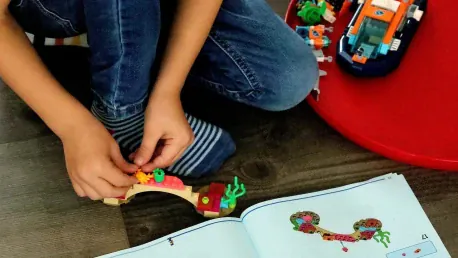Take yourself back to the classroom for a moment: The smell of wood shavings falling from sharpened pencils, the sound of chalk clawing down the board, and your eyes wandering around the multicolored posters. These memories may invoke feelings of disdain or delight, but one thing is certain—today’s classrooms are doing it very differently.By integrating gaming elements into the learning process, learners are more engaged—boosting their effort, attention, and interest. Gone is the time of students doodling away their days and dreaming that the bell would ring. By embracing an innovative way to encourage active participation, educational institutions are motivating learners to view lessons as an adventure, rather than a responsibility. With the current market estimated to boom from $9.1 billion in 2020 to $30.7 billion by 2025, the gamification of education has become an exciting emergence in the learning sphere.
What Is Gamification in Education?
Following the rewards and reinforcement principles of behavioral psychology, educators are gaining an understanding of the joys of game-based learning and its impact on students. To create a dynamic and engaging educational environment, badges and points are used to pinpoint progress and stir a sense of accomplishment. Leaderboards encourage a healthy competitive spirit that inspires students to boost their performances. Through structured challenges, learners can set out specific objectives that give them a stronger sense of direction and purpose. Akin to video game formats, learning activities can be segmented into levels to empower students to improve as they conquer the content. Coupled with instant feedback and tangible rewards, it’s easier than ever to unleash the potential of the learning experience. In fact, gamification in educational settings has boosted retention rates by up to 50%, proving its force in reshaping learning development. The key to this is the concept of intrinsic motivation, which plays on learners’ sense of achievement. Think about a time when you’ve invested hours into a new phone game and inadvertently learned a new skill. Such is the magic of gamification! By immersing students in interactive scenarios that mimic real-life challenges, educational content can cultivate a continuous curiosity for improvement.
Play Hard, Study Hard
In addition, gamification captures learners’ imaginations and engages them in a way that better caters to their needs. This approach’s interactive nature transforms the learning journey and elevates engagement by lastingly impacting students’ eagerness to learn. Gamification also increases collaboration skills above just working together with others, but also celebrating their wins when collectively reaching a goal. When learners are more excited about their educational journey, they absorb more of what is being taught. Gamification enables students to learn and progress at their own pace and unlocks a more personalized learning experience. This, in turn, offers the opportunity to cater to diverse learning styles and foster a culture of inclusivity and adaptability. Through this tailored strategy, students have a better chance to identify their interests and strengths in a more in-depth way.By introducing a more dynamic manner of problem-solving, gamification encourages learners to effectively analyze, synthesize, and evaluate information as they interact with it. By simulating real-world obstacles, students learn to overcome hurdles with a sense of inquiry and are equipped with essential skills to navigate complex situations. This also gives the students experiences to connect with and form a deeper understanding of the subject.
Put the Books Away, It’s Time to Play
When it comes to connecting today’s learners, textbooks are not cutting it. In an age where learners’ eyes are constantly darting between screens, staring at a scribbled piece of paper is the last thing they want to do. Digital game-based learning tools are reshaping the education landscape and introducing experiences that thrive on our natural motivations to learn—and all that it encompasses. Through thoughtful design, these tools meet learners where their interests already are and empower them to thrive in the 21st century.
Kahoot!
As one of the leading game-based educational platforms, Kahoot! enhances the learning experience with customizable content shared through interactive quizzes and questionnaires. With real-time feedback capabilities, this tool allows learners to evaluate their knowledge gaps and strive for continuous improvement. The biggest advantage is that learning can occur naturally without the student even realizing it. By structuring the games with time limits and scoring, learners can foster a healthy sense of competition and motivation.
Simformer
When it comes to game-based learning, Simformer is a game-changer that innovates the learning experience through realistic, immersive business simulations. It is a flexible and versatile tool that equips students to learn about key aspects of running a business. This ranges from creating and conducting training sessions and evaluating staff competencies to implementing skill development programs. Through this format, learners are able to transform theoretical knowledge into practical skills.
SplashLearn
With a focus on making foundational math and reading skills more engaging for students, SplashLearn offers interactive games that not only cover academic material but also extend to content that enhances essential skills, like critical thinking, creativity, and logic. Every game is designed to match each student’s learning style and pace to ensure they’re sufficiently supported and challenged while keeping the process dynamic. Through a comprehensive curriculum and extensive resource library, this platform provides a clear path toward a more engaged educational environment.
Final Thoughts
Educational institutions across the globe are embracing the adventure that learning can be through the exciting innovations of gamification. By unleashing the principles of gaming—from strategy to rewards—students can reignite their intrinsic motivation, catapult collaboration, and gain educational autonomy through more immersive journeys. Game-based learning platforms, such as Kahoot, signify the power that lies in this shift by shedding light on the importance of tailoring learning to every student’s preferred style, pace, and needs.Introducing more interactive elements in education also empowers learners to gain experience in tackling real-world challenges with more insight. Gamification is about nurturing students’ natural curiosity where their interests already reside, which aids in knowledge retention. At the end of the day, it’s all about play.









